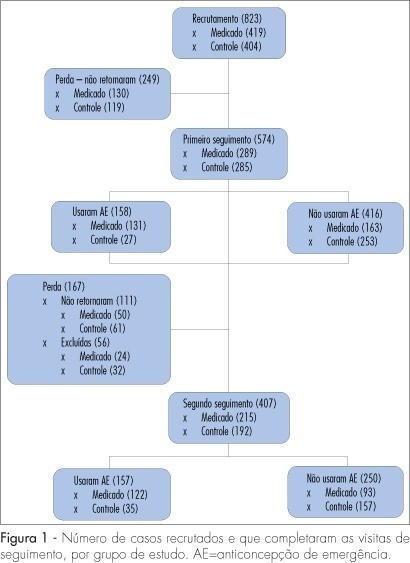Revista Brasileira de Ginecologia e Obstetrícia. 2008;30(2):55-60

PURPOSE: to compare two strategies of access to emergency contraception: only information and information with previous delivery of this contraceptive method, and its relationship with the use of this method and the regular use of contraceptives. METHODS: from August 2004 to January 2005, 18 to 49-year-old volunteers, attended at reproductive health clinics from six Brazilian towns were recruited. The subjects were randomly distributed in a group getting information about emergency contraception (Control Group), or in a group getting information about this method and previous delivery of the contraceptive (Medicated Group). Follow-up visits occurred into four and eight months. Person and McNemar’s tests were used for the statistical analysis. RESULTS: from the 823 recruited subjects, 407 completed the 8-month-observation period and were the sample analyzed. Most of the subjects (61%) did not use the emergency contraceptive. The subjects from the Medicated Group used more emergency contraceptives (57%) than the ones from the Control Group (18%), and they did it more precociously, concerning the time since the unprotected sexual intercourse. There was a significant increase of regular use of contraceptives among the subjects who used emergency contraceptives in the Medicated Group (88% versus 97%) and a statistically nonsignificant decrease in the Control Group. CONCLUSIONS: information and previous delivery intensified the access and use of emergency contraceptives, and did not reduce the regular use of contraceptives, including condoms.
Search
Search in:


Comments